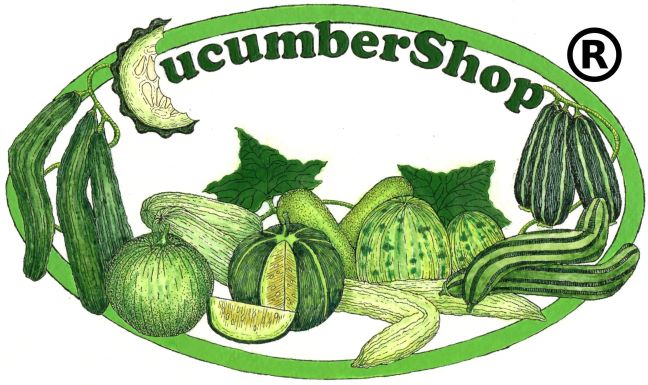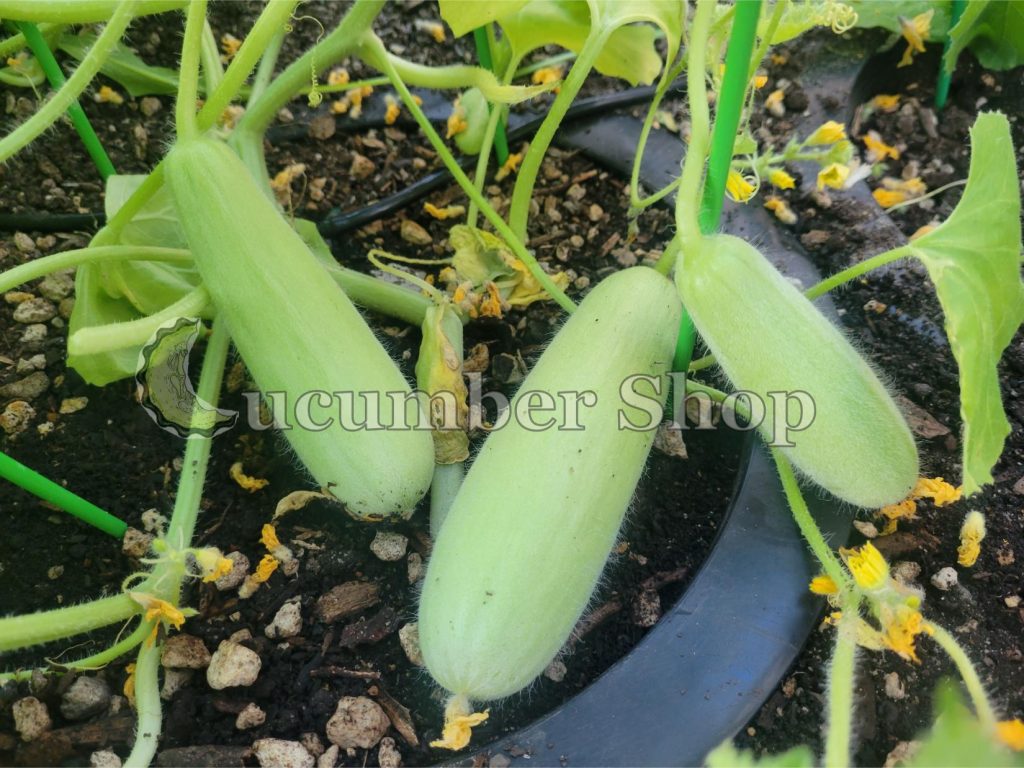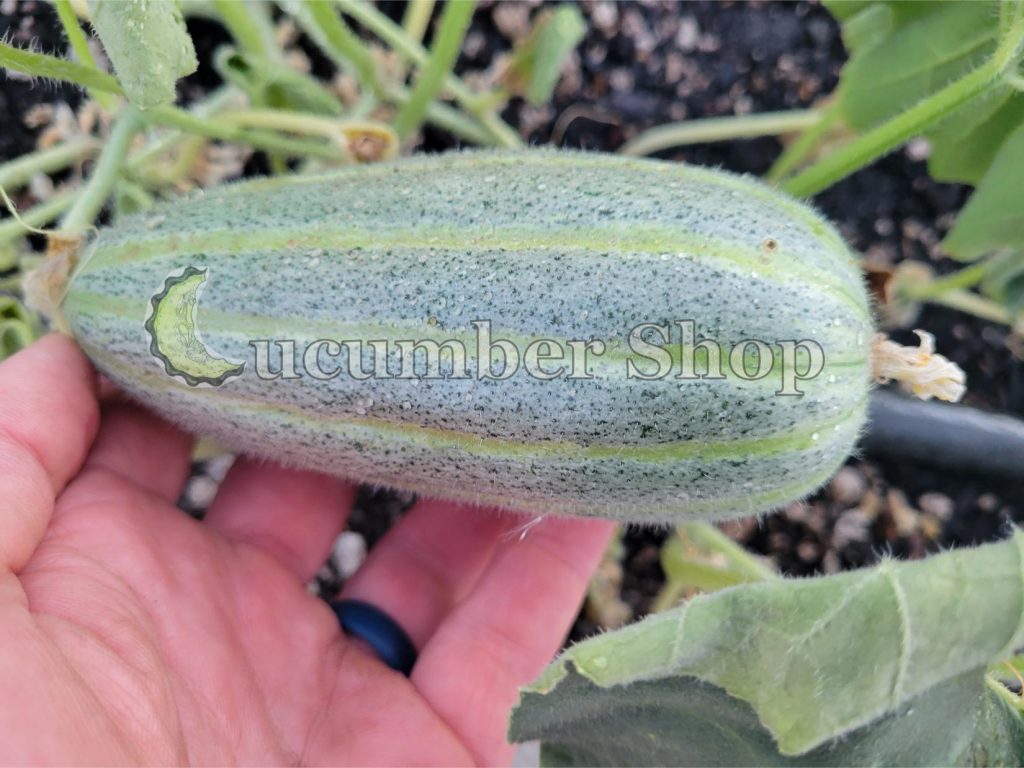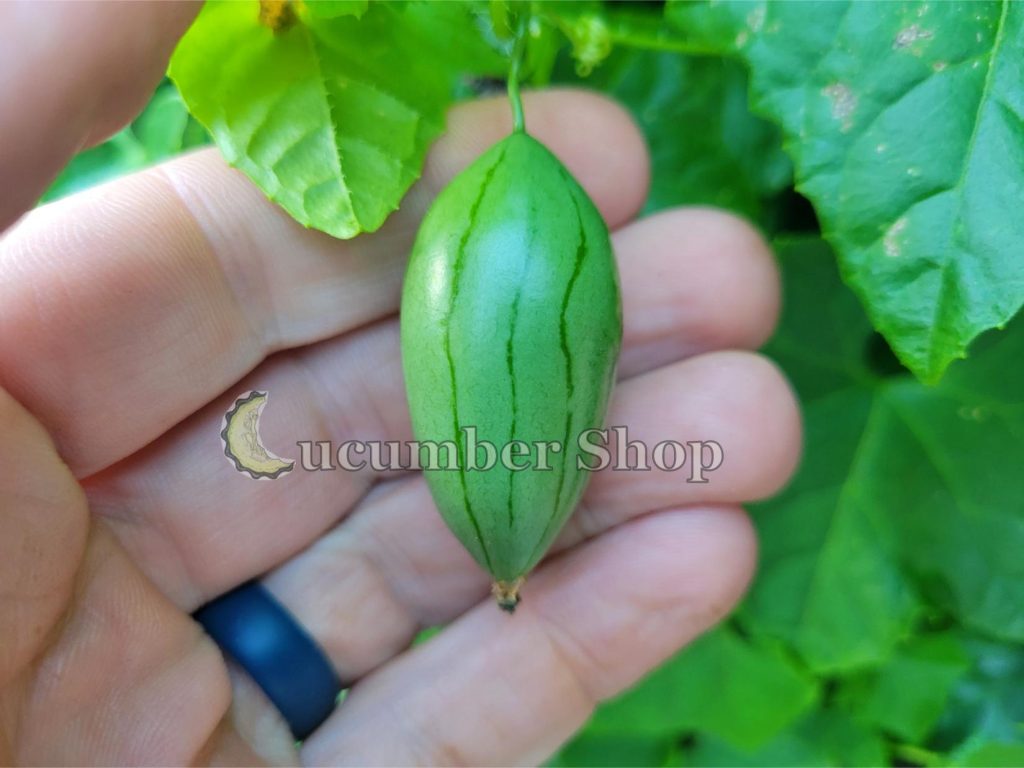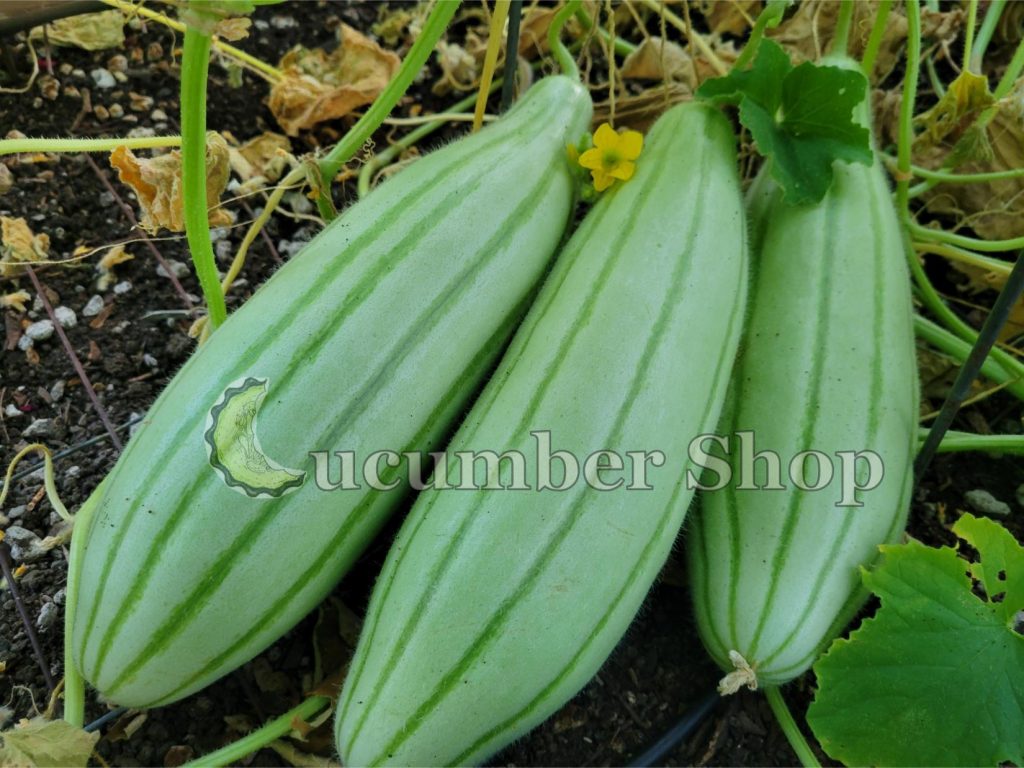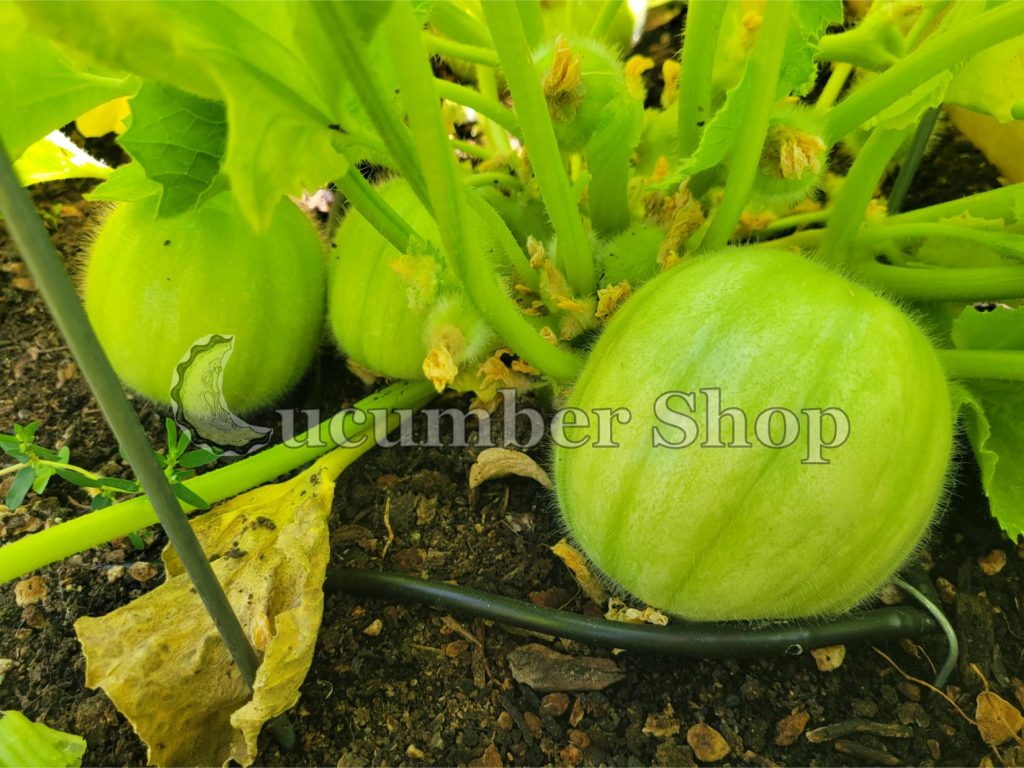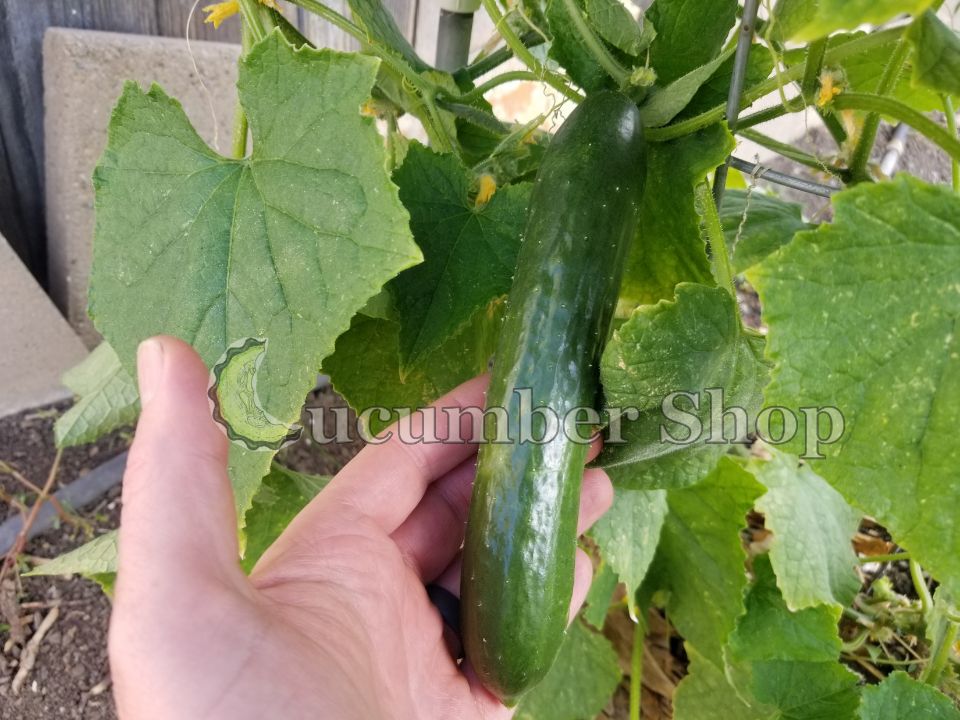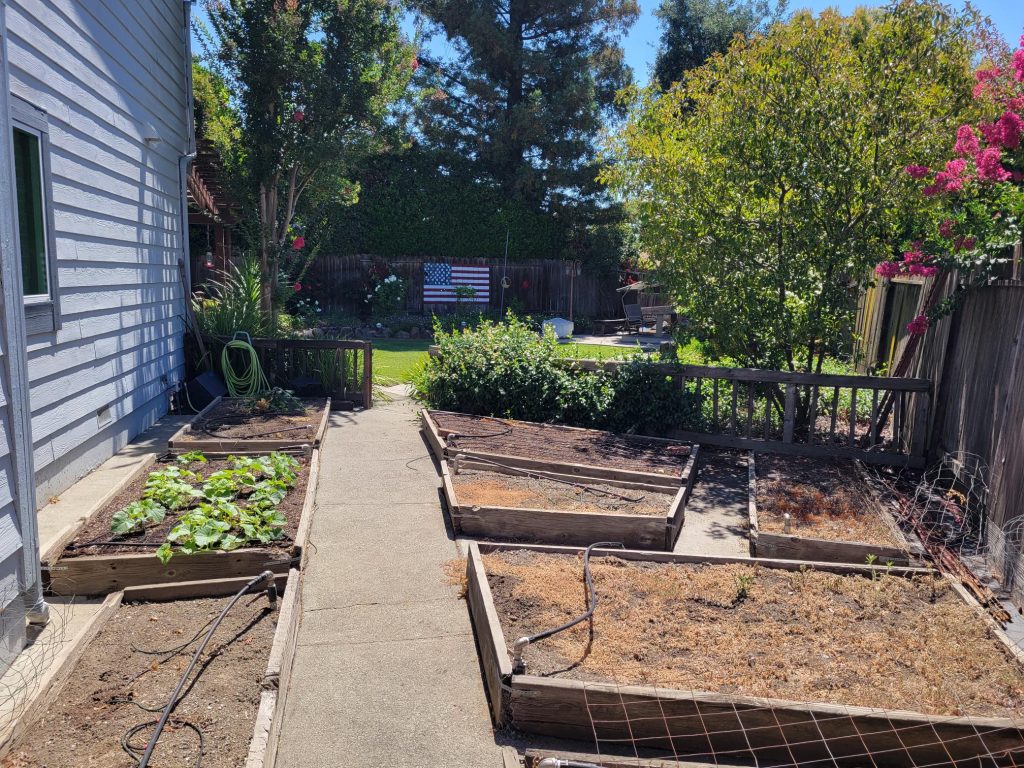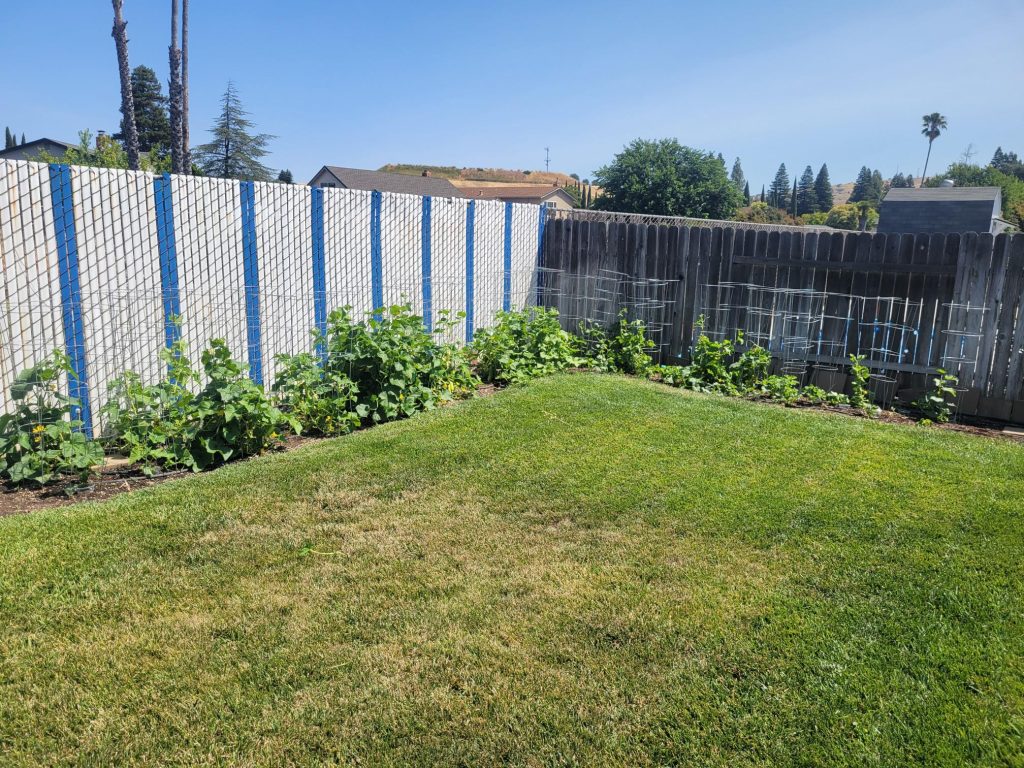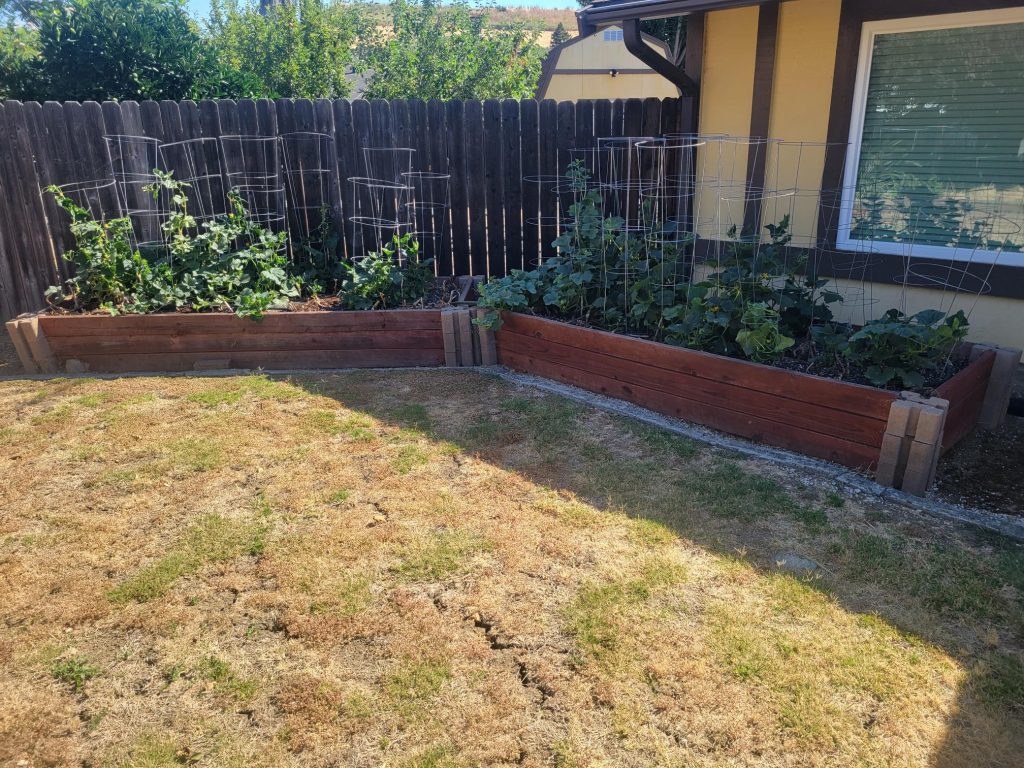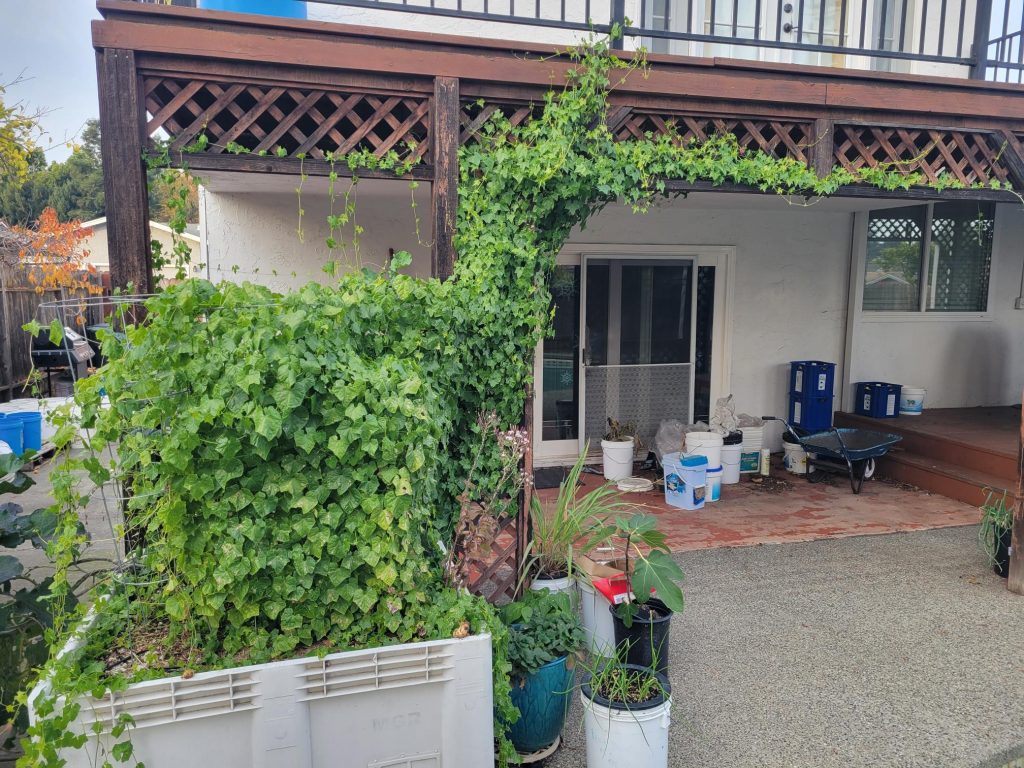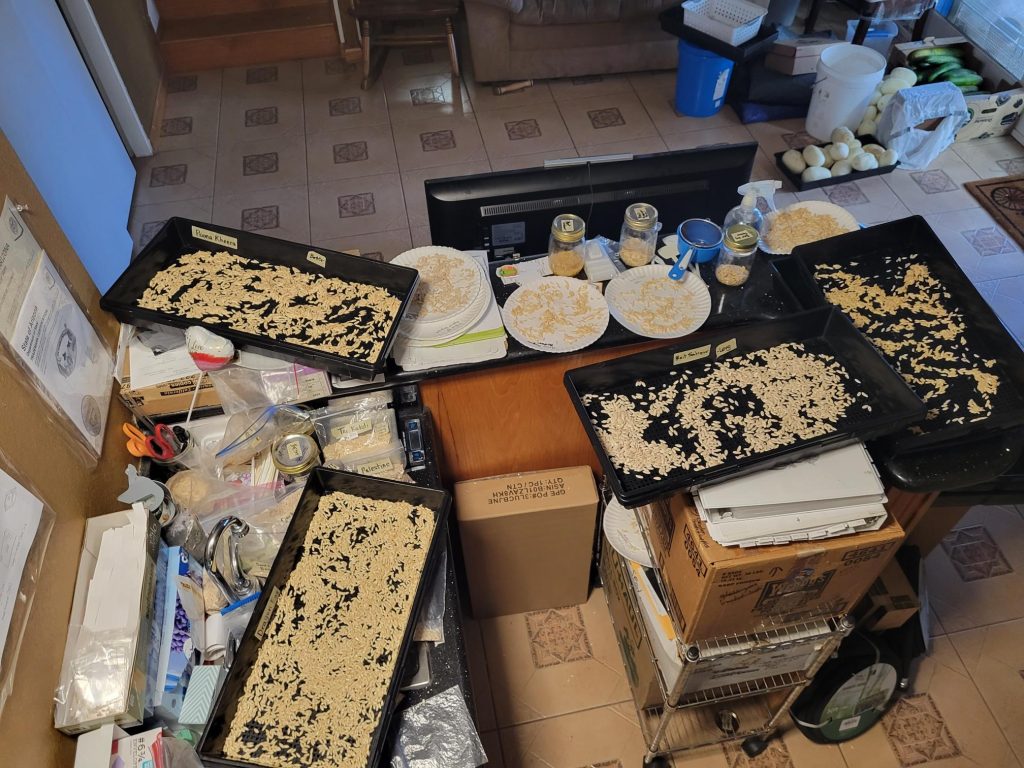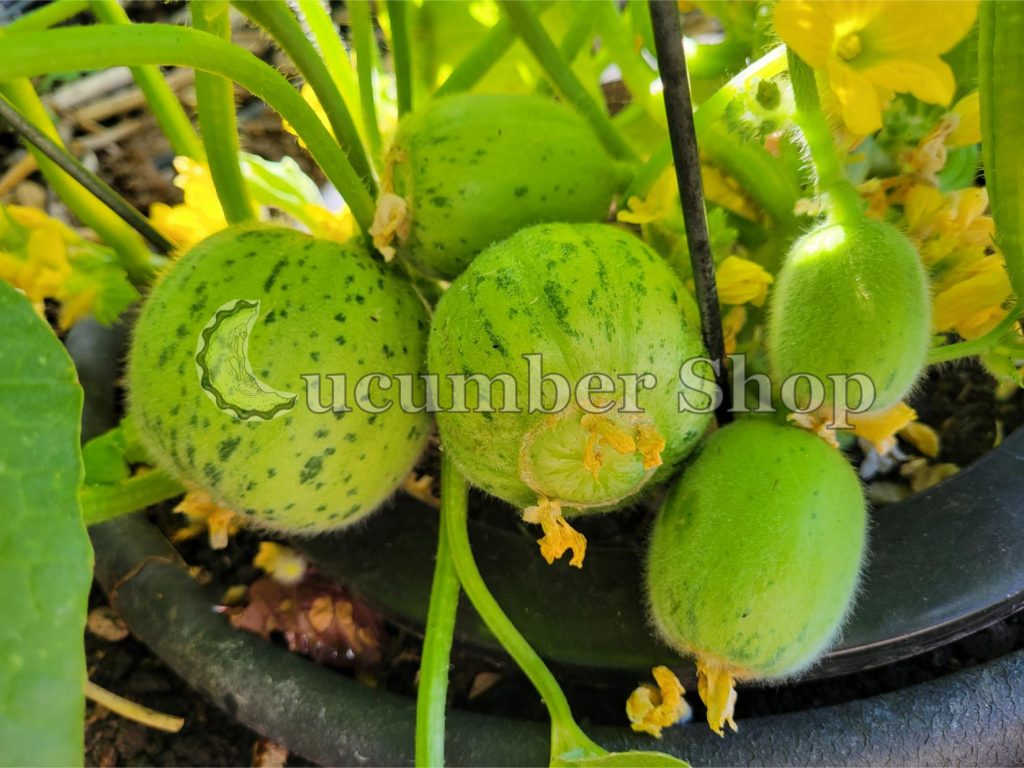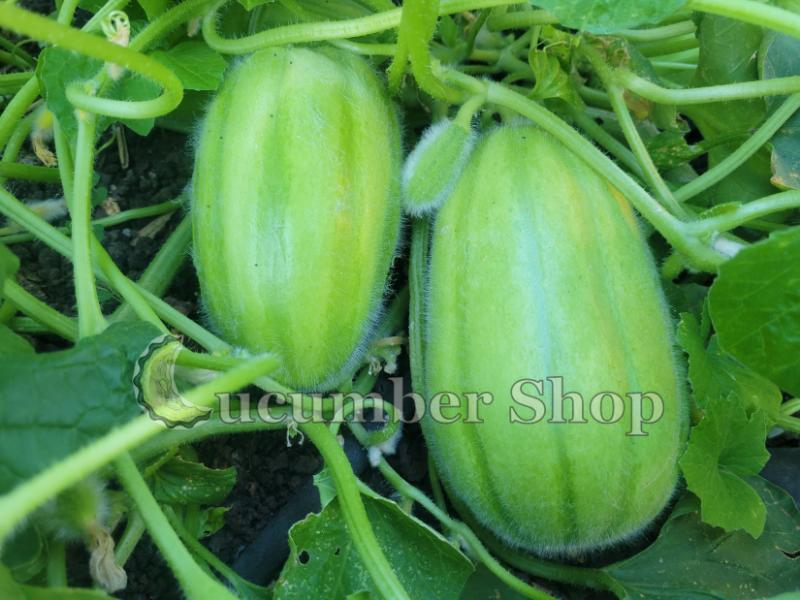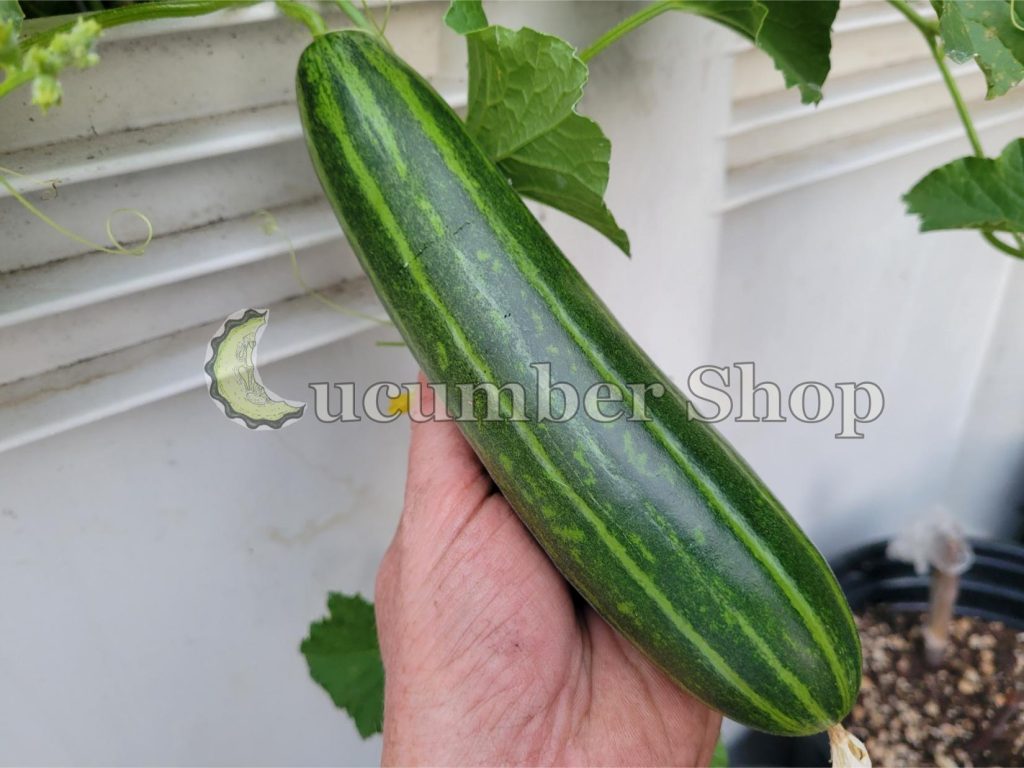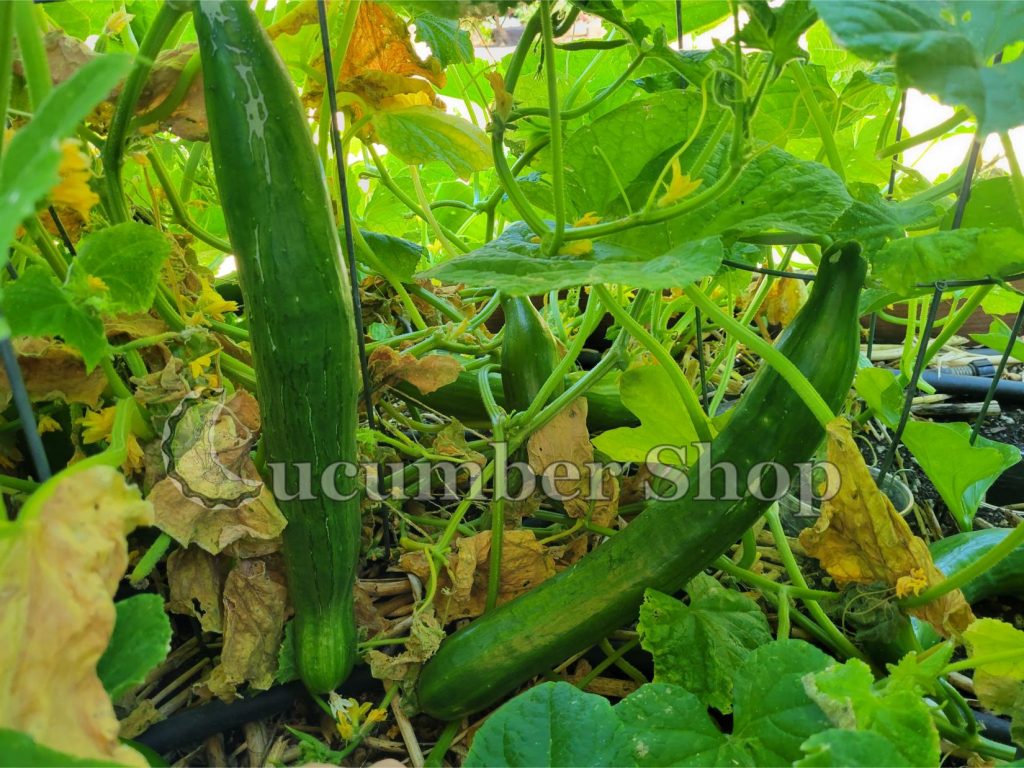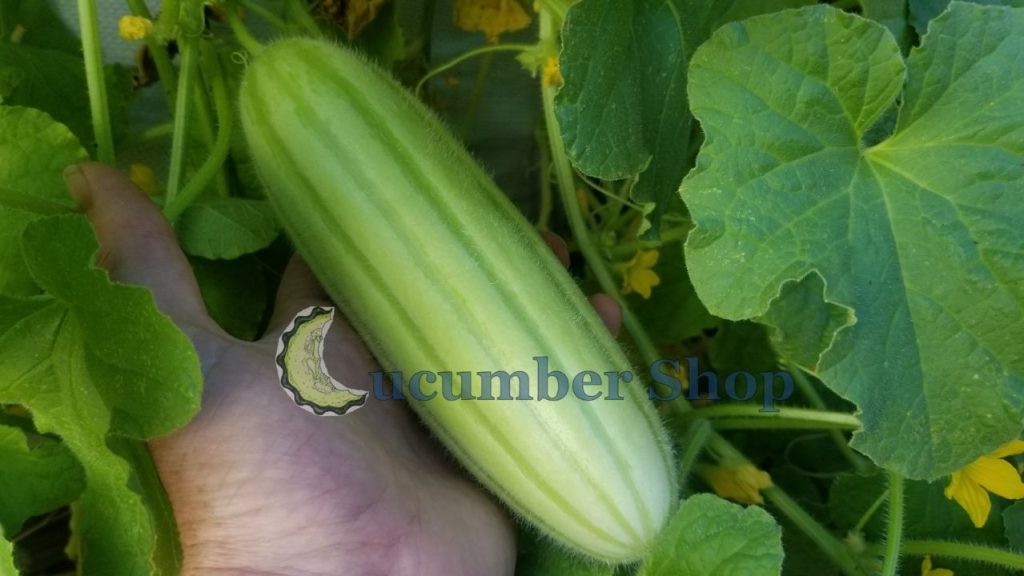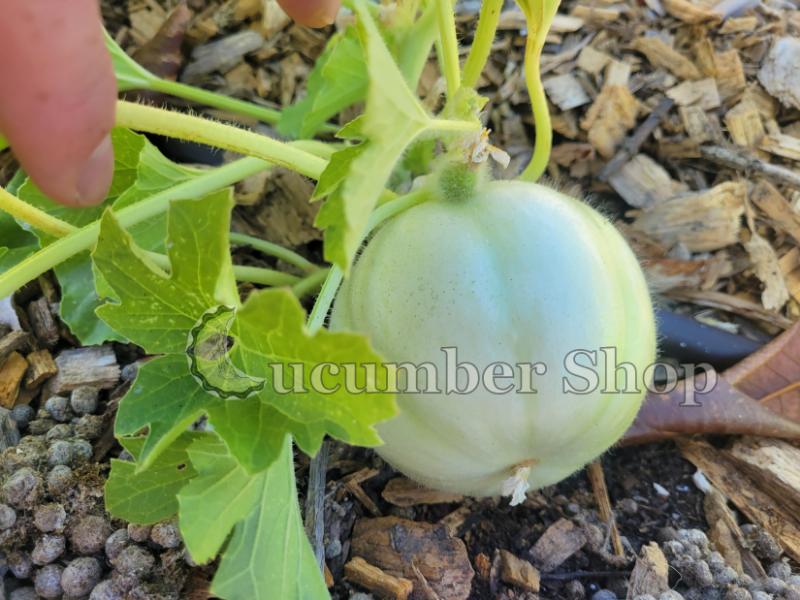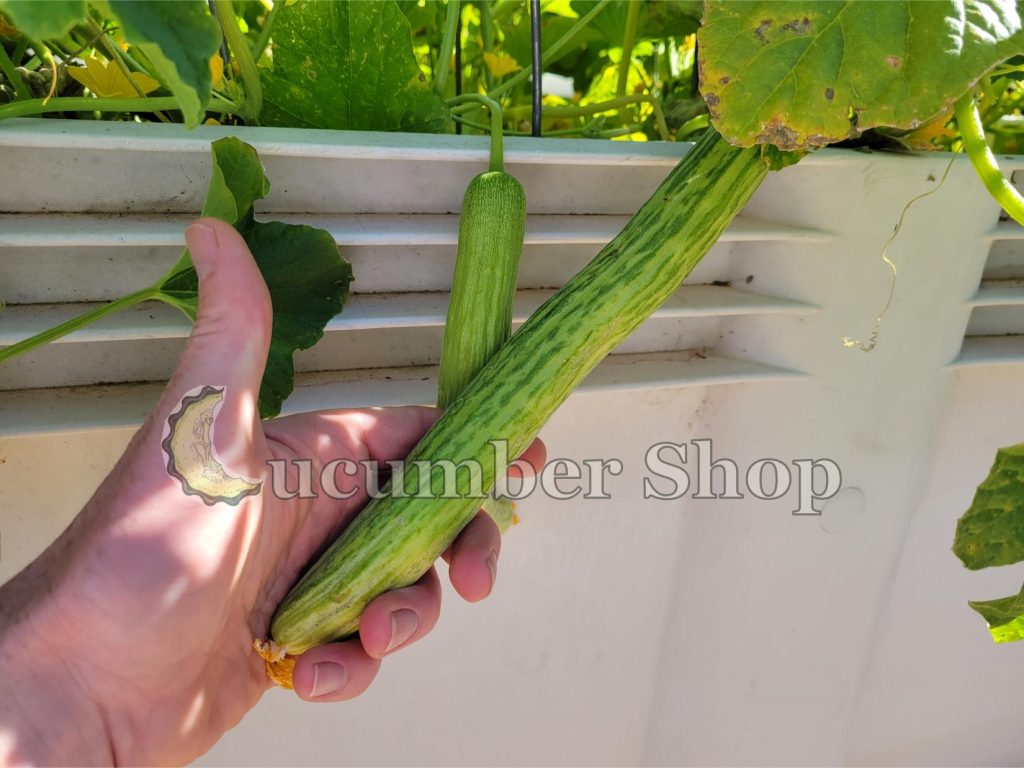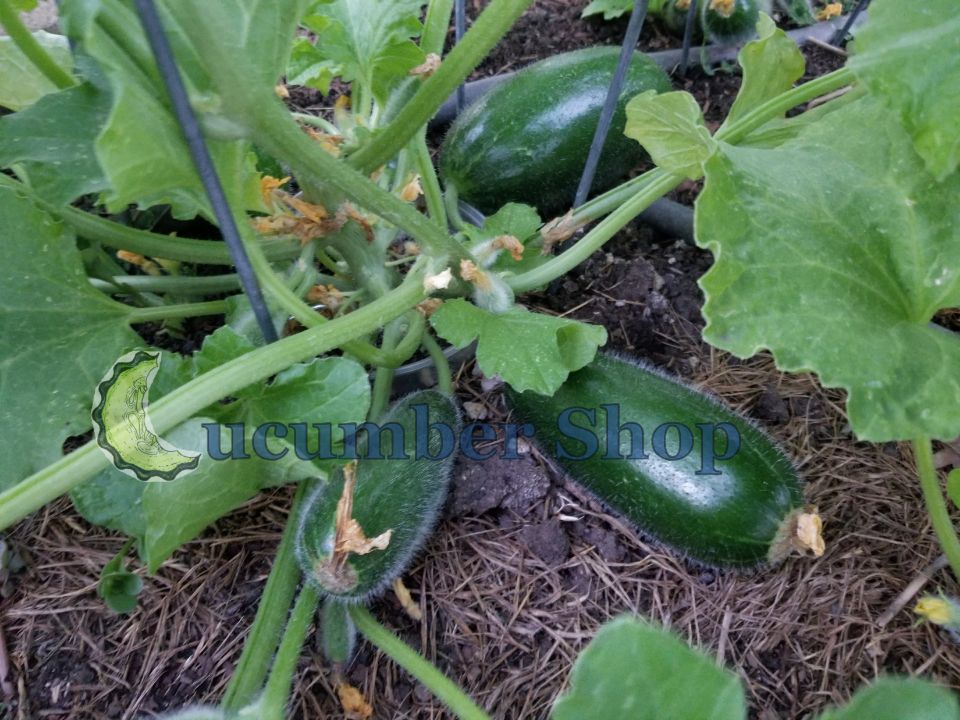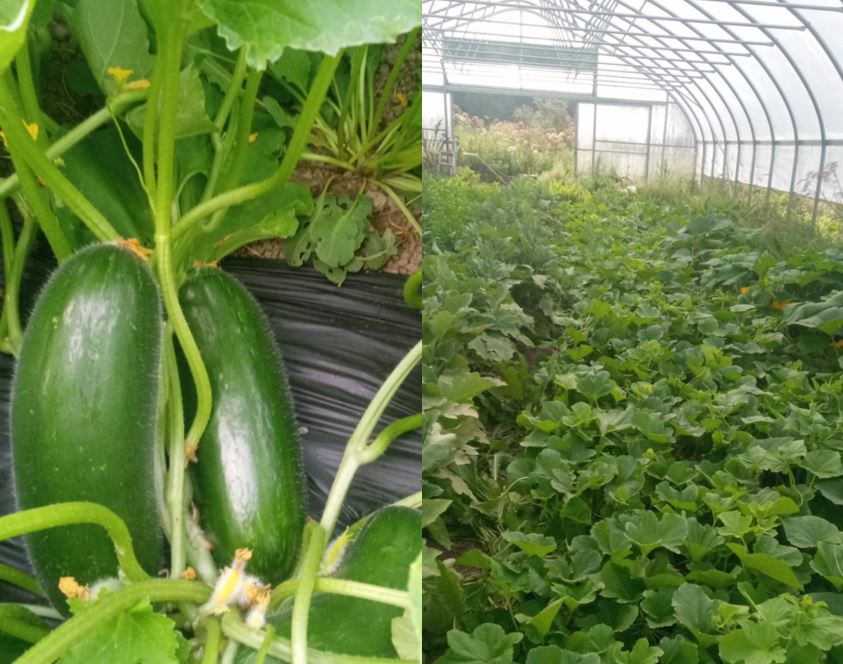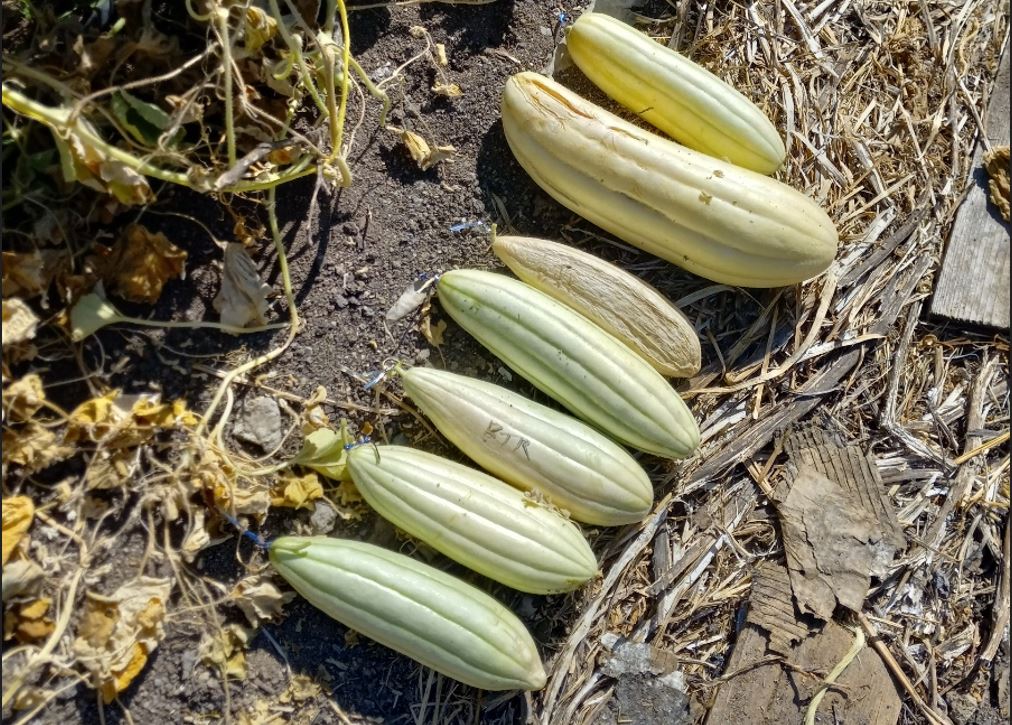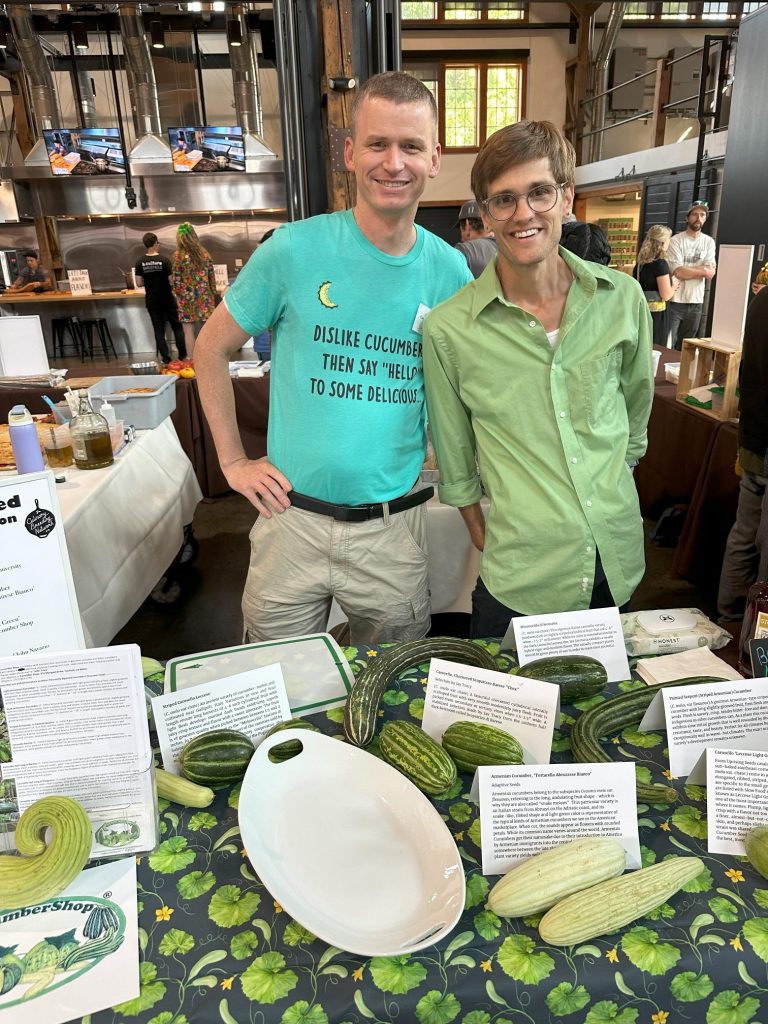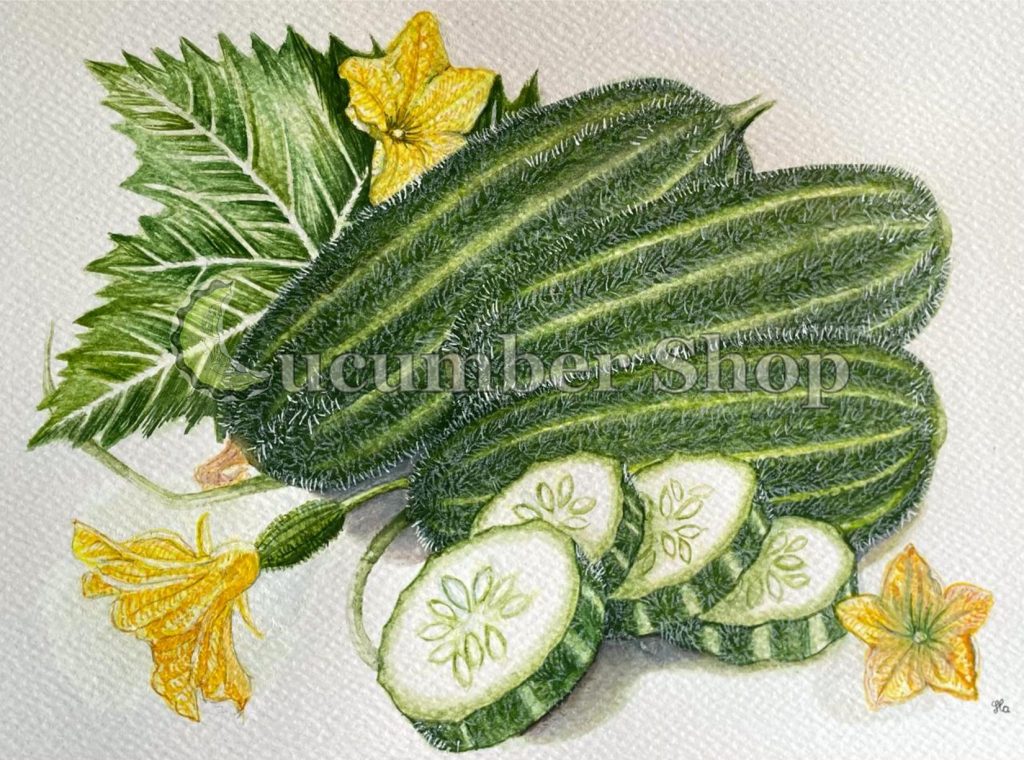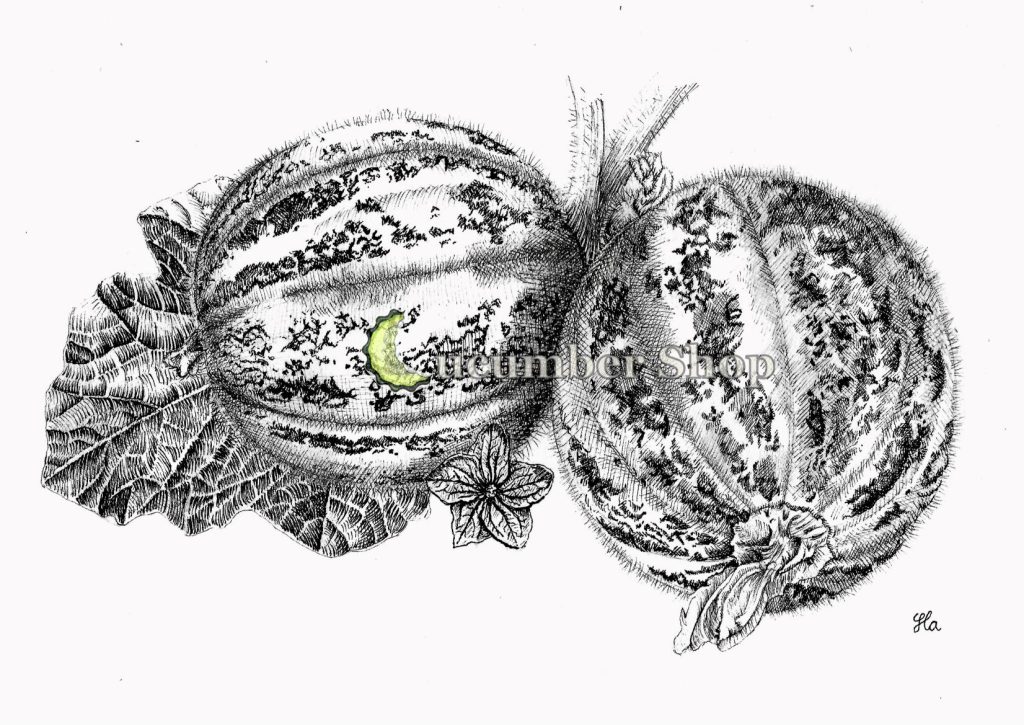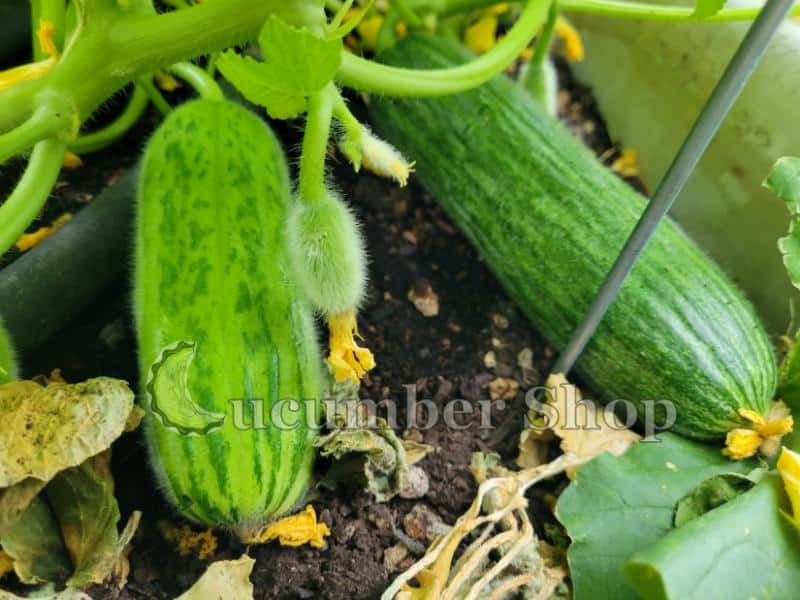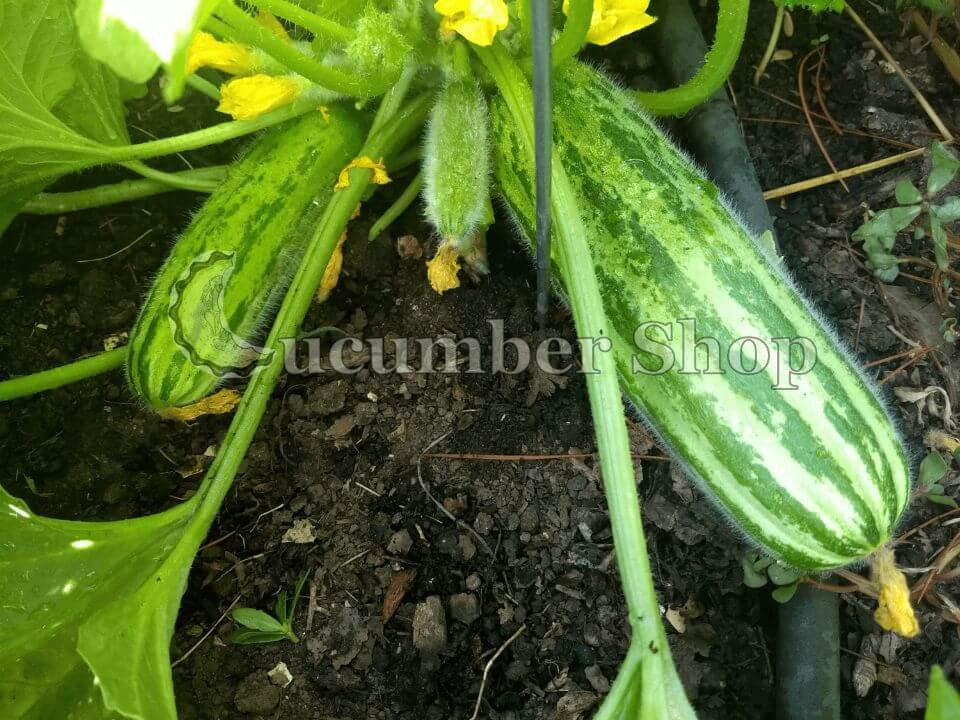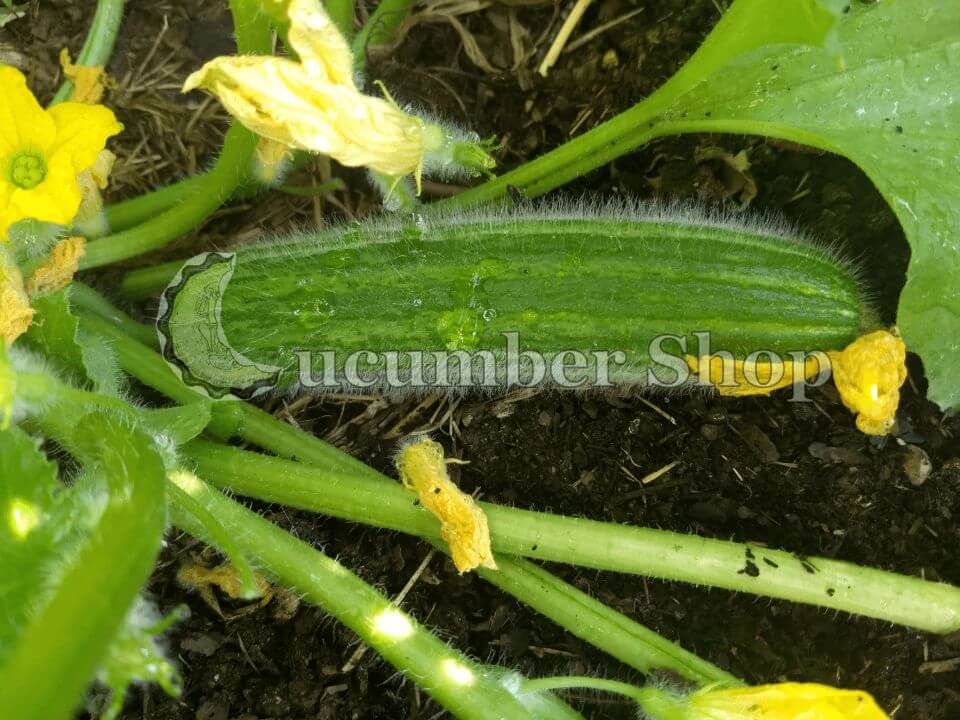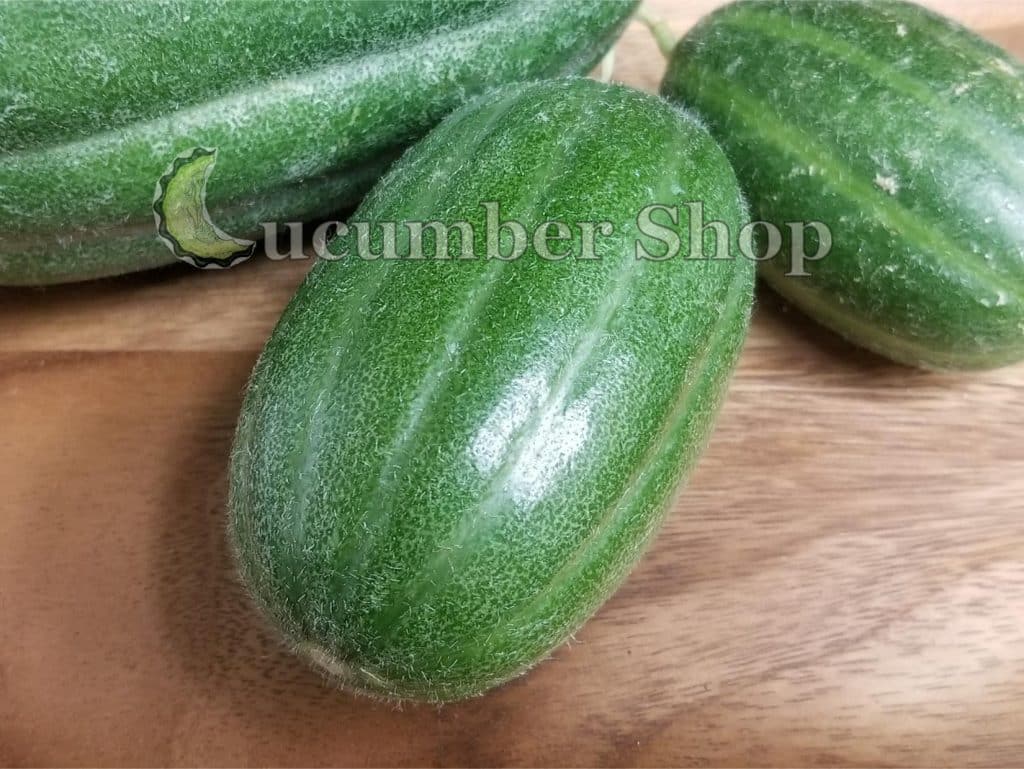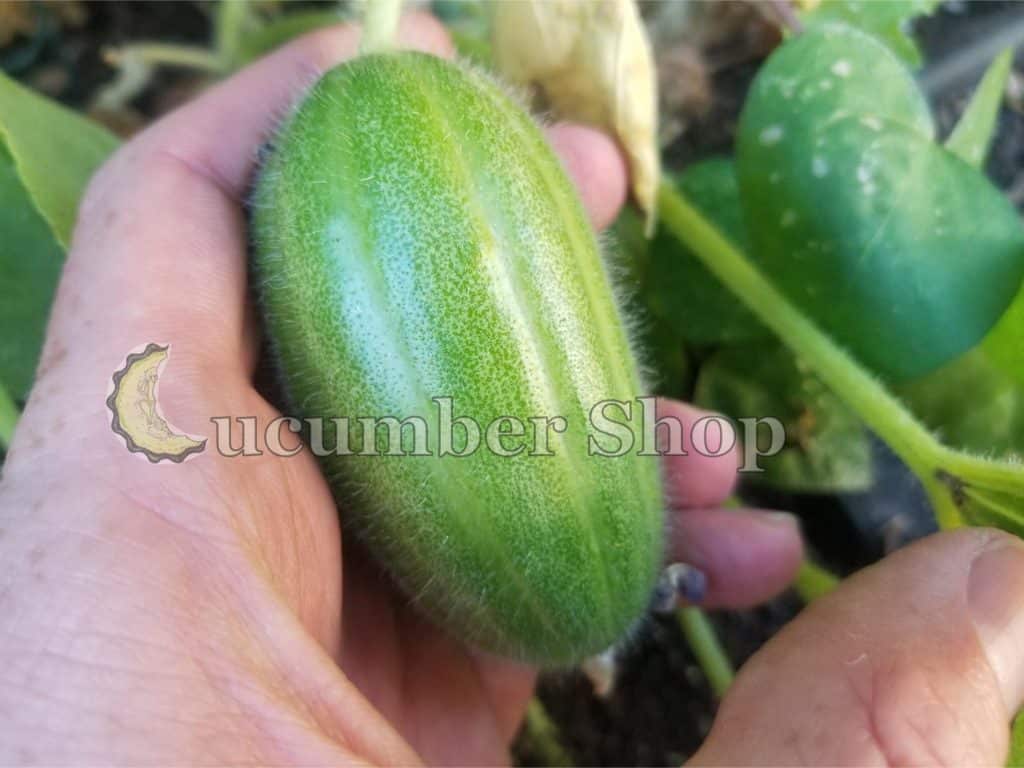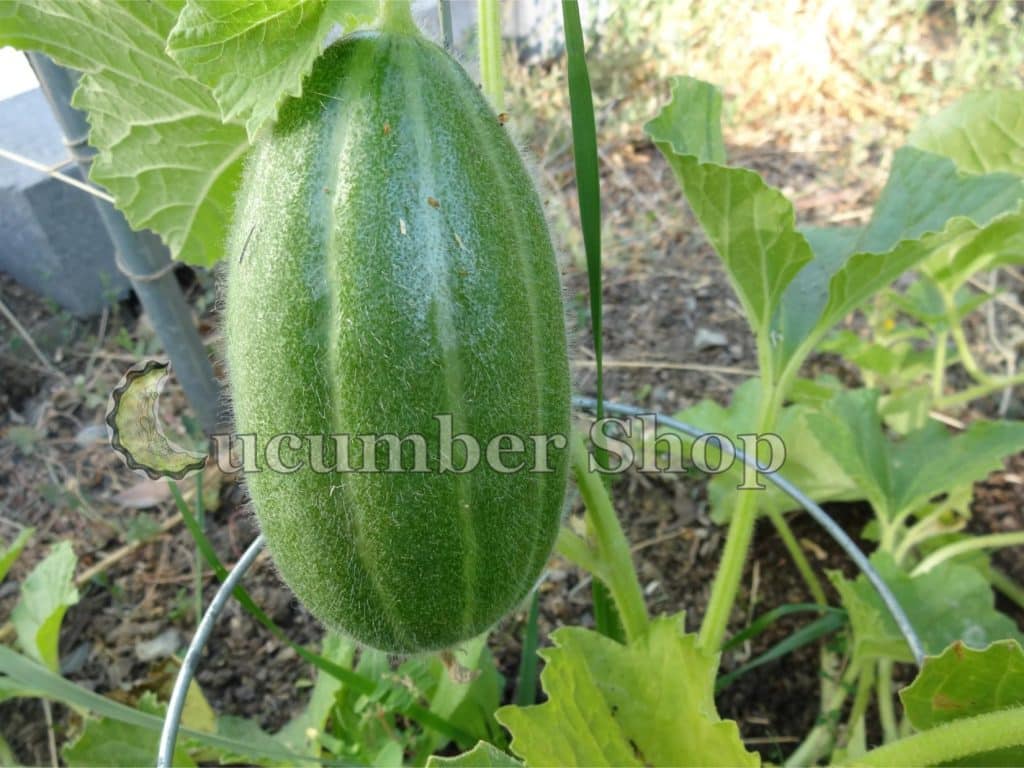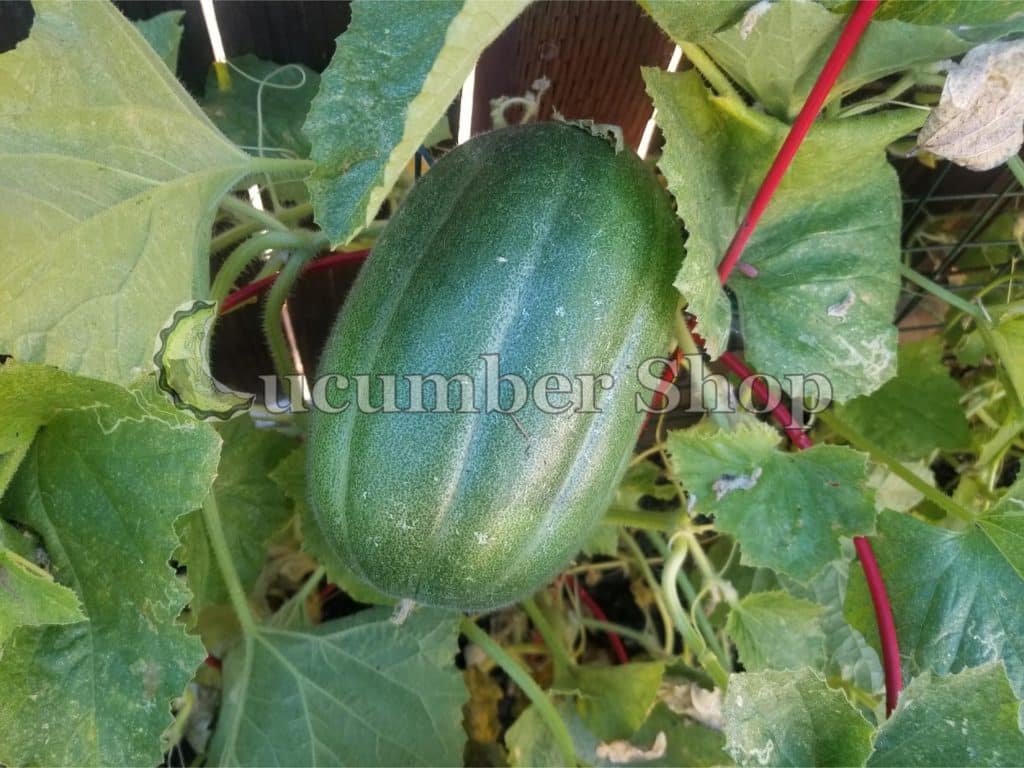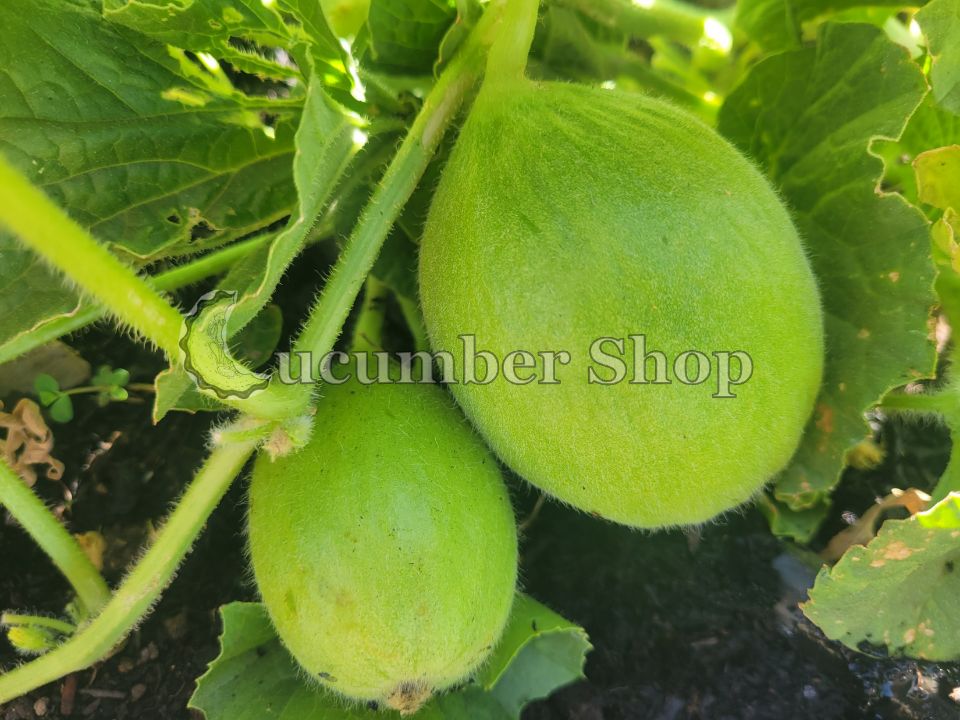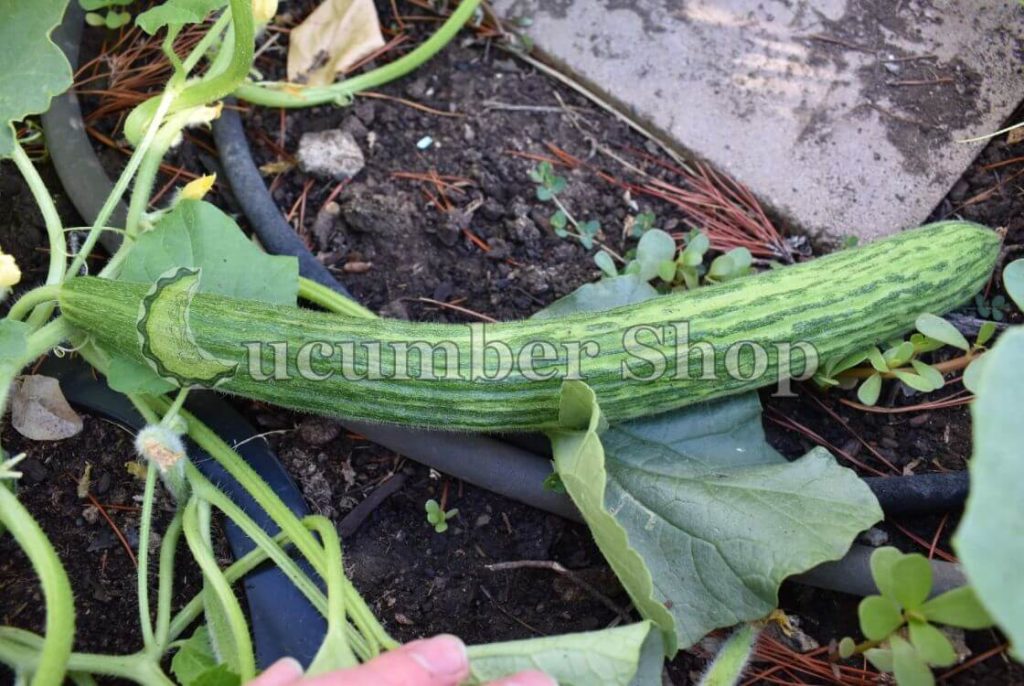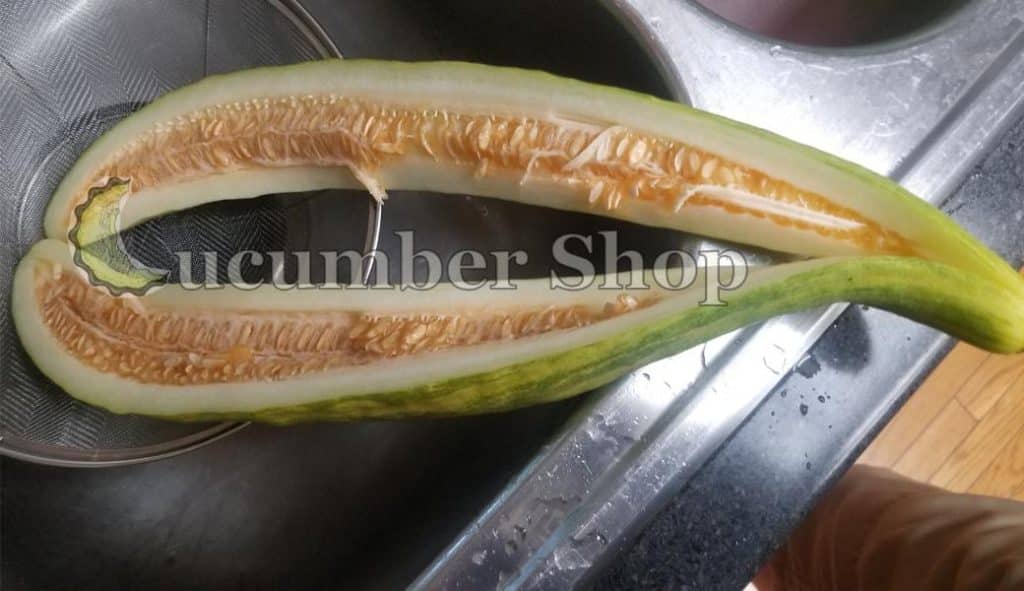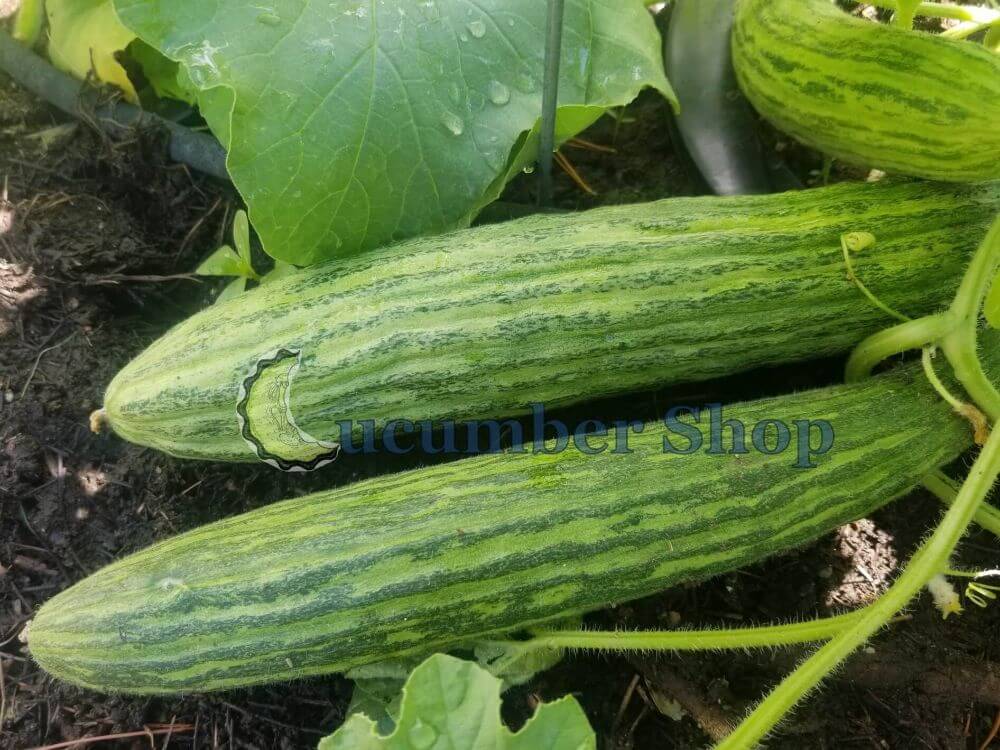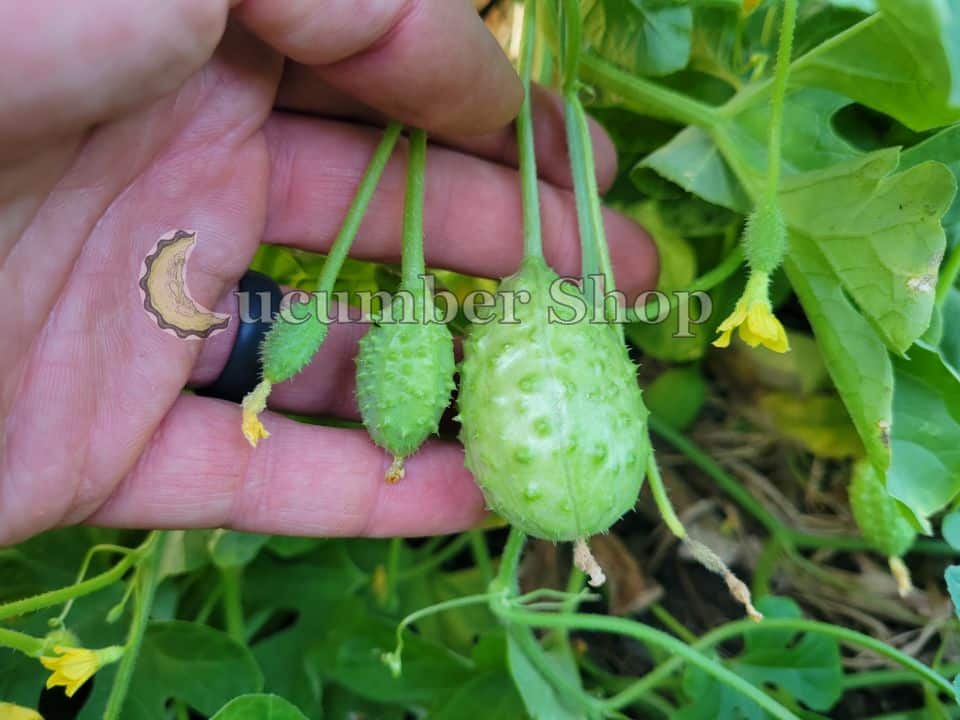Cucumberer: Noun. A made-up name for a person who enjoys growing or consuming an abundance of cucumbers.
At last! – Here are our New Varieties for 2025-2026:
New Varieties: While I occasionally grow out a very common variety for the first time, most of the new varieties that I offer take months, if not years, to acquire.
-Jordanian Facoose: This cultivar is new to us. I grew it a little last year. The seeds were entrusted to me by a Jordanian immigrant who I work with. While they make fine slicing cucumbers at about 2 inches in diameter, my friend said that this particular variety is sold in the marketplace when the fruit is very small for making pickles. You can order them here.
–
-Beit Sahour Faqous: This is one of two populations of Faqous from the Beit Sahour area provided to me by a Palestinian immigrant currently residing in Southern California. I am planning to grow out the other population next year. Whichever variety produces more consistent high-quality fruit will likely be the variety I continue to offer as the Beit Sahour Faqous in the future. You can order them here.
–
Tar Kakdi: This is one of the coolest and most difficult varieties I have ever grown. It has taken years for me to begin to understand how to save a small quantity of seed and it will likely take many more years before I can grow the seed to a higher quality, due to how extremely susceptible the vines are to Fusarium Wilt and Powdery Mildew. I am just happy to have been able to grow enough to offer. With this being said, know that the population was selected from a handful of populations from this Indian Snake melon. This population exhibited the longest fruit and the most beautiful flowers. Because I have grown four generations of the population in the United States, they have become slightly easier to grow over that time. With all that being said, because I would like my customers to have a good experience, please don’t purchase this if you life in a cool wet climate or you don’t receive sufficient sun. There are much easier and fun varieties that I offer. You can order them here.
–
-Dragon Egg: Tasty, easy to grow and productive. I grew this variety at the homestead of a family friend in the Suisun Valley area. Given all of its qualities, what is not to like about the Dragon Egg Cucumber? You can order some Dragon Egg cucumbers here.
–
Pepininho do Mato: Yet another pseudo-gherkin from the new world – this time from Brazil. Despite a similar growth pattern as other Melothria species (slow to start and taking over later on) this wild variety has a number of interesting traits that set it apart from the other Melothria species. The tapered shape that helps to shed water, the fruity smell (reminiscent of banana) that attracts exotic birds and the tropical flavor of the softening fruit are all unique characteristics that the grower can look forward to when cultivating this unique cucumber. It is available here.
–
Previously Offered, but grown fresh this year: While I occasionally purchase seed from other growers, it is something that is an exception, rather than a rule. I have very high standards for vigor and germination that are very rarely met by any seed company that sells in bulk.
–
Palesinian Fakous: Yes – I have changed the spelling of the Arabic Faqous/Facoose variety – primarily due to releasing two other cultivars with a similar name. And the Beit Sahour Faqous was named long before I acquired my seed of the general Palestinian variety. While not advertised, I do give a large portion of the sales of my Palestinian varieties to a Palestinian seed organization. You can order them here.
–
Carosello Barese: Fun and easy to grow, this is one of my very favorite early season caroselli. You can order the Carosello Barese here.
–
-Green Finger Cucumber: This is my first time growing this variety myself. While not extremely productive, it has a lot of parthenocarpic tendencies and is my all-time favorite tasting Cucumis sativus cucumber. You can pick some up here.
–
Poona Kheera: I was running out of this Indian variety and it was the first time I grew it out this year. True to Indian varieties, it can be picked early, mid-season or late, depending upon on soon the grower wants to eat or store it. You can pick some up here.
–
Russian Pickling: While this is a decent variety, I have to admit that I grew this primarily for the customers who came clamoring to my shop last year to buy me out of the variety. Interested in trying them out? Try them out here.
–
English Telegraph (fail). This is my very last time trying out this variety. Of all the seed companies that I contacted concerning this variety, very few of them said that they personally grew it – and those that did said that they were discontinuing it. Compared with Green Finger, which one grower complained to me about being a poor producer, English Telegraph is abysmal. Instead of harvesting pounds of seed in a small plot, the grower would be fortunate to harvest several grams per acre. Perhaps the poor seed set has something to do with warmer summer temperatures, but unless someone can change the genetics to encourage greater seed set, there seems to be very little future for this once-famous heritage cucumber variety.
–
This year’s season:
Similar to saying from the rooster Alan-A-Dale (Disney’s animated Robin Hood) every season “has its ups and downs – sometimes the ups outnumber the downs” but not for me this year. While I love to garden, this year was a whole lot of work, leaving me unsure about what my future gardening will look like and where I will be welcome to grow next season.
Lets start with the positive:
I was able to grow out in a new garden area with multiple small plots. This garden has a lot of potential, as long as I don’t get stung by aggressive ground hornets – which led me to be trying to avoid getting stung working on the garden at night.
–
I was able to set up a couple grape harvest bins in a lady’s front yard. Let’s hope I can grow again there next year.
–
Now the okay:
I was able to grow on a property of a family friend in Suisun Valley, where I grew on the year before. There were some logistical challenges that came up in some miscommunication, but the harvest was relatively good this year. Hopefully I will be able to grow here again.
–
While I was able to grow in another garden in the Suisun Valley area, the space was only for this year and, after a whole lot of work fighting off bindweed, I managed to harvest a couple grams of English Telegraph. We’ll see what comes of this plot for next year, but I have not been invited back.
–
I was told that one of my growers moved from their plot and I needed to move the garden. Fortunately, their son moved into the property, so I just needed to move the grape harvest bin to the front of the property. Hopefully, I can continue to grow there in the future.
–
Finally the difficult:
Losing the Fertile Garden: While I was able to grow in the fertile garden, the owner said that he is likely moving away next year, so I will probably not be able to grow there again. This is the garden where I have grown the longest and is the only garden that has been consistently productive for me.
–
Losing the Raised Bed Garden: This is my second-best plot that I lost this year. Within the space of a week I had to move several yards of heavy moist soil off of the property and on to my own. This kind of labor-intensive back-breaking work takes a lot of the joy out of gardening.
–
